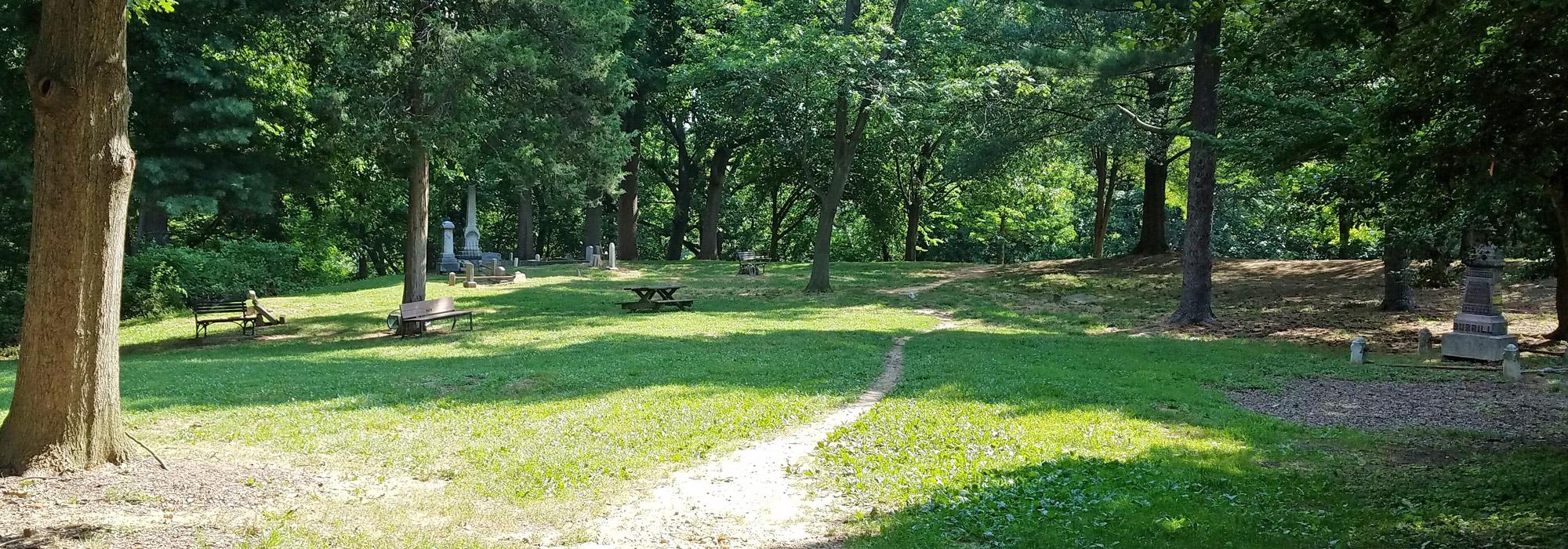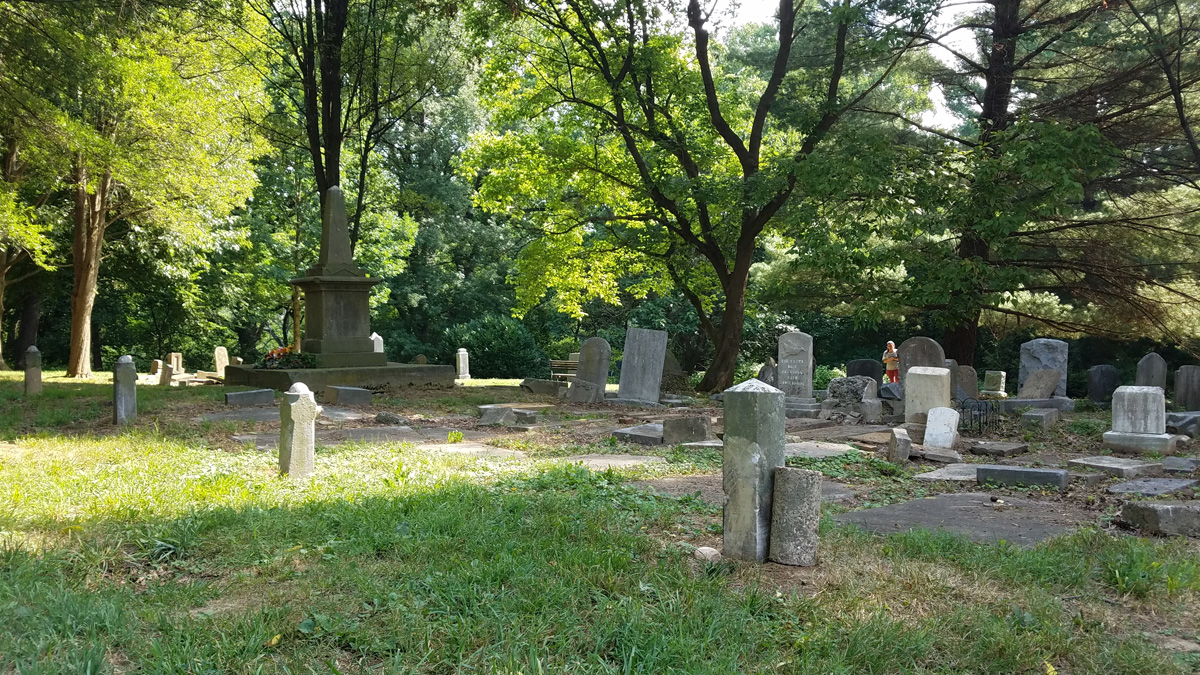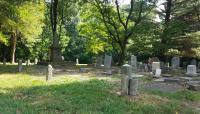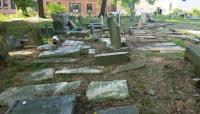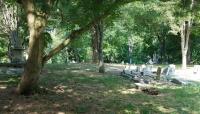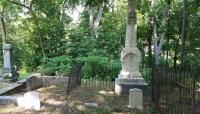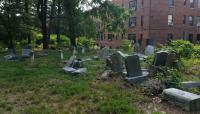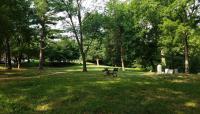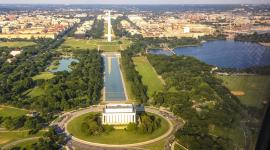First opened in 1809 by the Montgomery Street Church, the Old Methodist Burying Ground was a rare mixed-race cemetery for both free and enslaved African Americans, as well as whites. Adjoining the burial ground to the east, the Female Union Band Society Graveyard was founded in 1842 for the use of its members, who were free African American women. Following the establishment of the nearby whites-only Oak Hill Cemetery in 1849, white burials were removed en masse and their associated maintenance fees transferred. Mount Zion United Methodist Church, a black congregation, leased the burial ground beginning circa 1879. Over time, the two burial grounds came to be collectively called Mount Zion Cemetery. As congregants moved elsewhere, the cemetery, representative of a time when African Americans made up as much as one-third of the population of Georgetown, gradually fell into disuse. The last burial took place in 1950. In the mid-1970s, activists nominated the cemetery for inclusion in the National Register of Historic Places. At the same time, volunteers began clearing dense invasive vegetation and, to enable regrading, removed headstones, massing them in piles along the cemetery’s northern perimeter.
Accessed via an alley tucked into a residential neighborhood, the unfenced cemetery slopes downwards towards a steep and densely wooded bank along Rock Creek Parkway. The cemetery contains thousands of burials, including that of Clement Morgan, the first African American graduate of Harvard Law School. Its only structure, a brick pre-burial vault, was reputedly used as a stop on the Underground Railroad. Mount Zion Cemetery was listed in the National Register of Historic Places in 1975 and, in 2018, was recognized as a Site of Memory of the United Nations Educational, Scientific and Cultural Organization (UNESCO) Slave Route Project.



